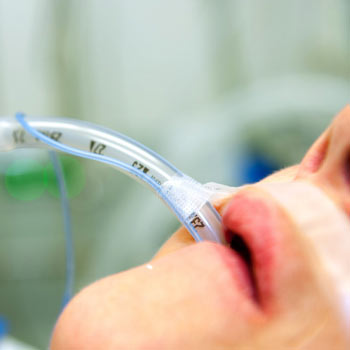Endotracheal intubation
- Home
- Services
- Pulmonology
- Endotracheal intubation
What is Endotracheal Intubation?
In the field of pulmonology, endotracheal intubation is a crucial procedure used in emergency and critical care settings to establish and maintain an airway. It involves inserting a tube into the trachea (windpipe) through the mouth or nose, allowing mechanical ventilation and ensuring adequate oxygenation in patients who are unable to breathe effectively on their own. This detailed guide will walk you through the process, indications, techniques, and considerations involved in endotracheal intubation.
What are the fundamentals of Endotracheal Intubation?
Endotracheal intubation is a lifesaving procedure performed by healthcare professionals, typically in emergency departments, intensive care units (ICUs), and during surgeries where general anesthesia is administered. It's employed when a patient's airway is compromised due to conditions such as
- Respiratory Failure: When a patient cannot maintain adequate oxygenation or ventilation
- Trauma: Severe injuries to the head, neck, or chest that obstruct normal breathing
- Cardiac Arrest: To facilitate effective ventilation during resuscitation efforts
- Anesthesia: To manage and control the airway during surgeries

What are the steps involved in the process of Endotracheal Intubation?
Preparation
Before initiating the procedure, thorough preparation is essential
Patient Assessment
Evaluate the need for intubation based on clinical signs, symptoms, and diagnostic tests (e.g., blood gases, imaging).
Equipment Check
Ensure all necessary equipment is available and in working order
- Endotracheal tube (ETT) of appropriate size
- Laryngoscope with blade (e.g., Macintosh or Miller blade)
- Stylet (optional) to shape the tube for easier insertion
- Syringe for inflating the cuff of the ETT
- Bag-valve-mask device for manual ventilation
- Suction equipment to clear the airway, if needed
Pre-oxygenations
Administer high-flow oxygen to the patient for several minutes to maximize oxygen reserves in the lungs before intubation. This reduces the risk of hypoxemia during the procedure
Positioning
Position the patient appropriately to optimize airway alignment and access. The head is typically placed in a sniffing position (extension at the atlanto-occipital joint and flexion at the cervical spine).
Induction and Sedation
Administer medications for induction and sedation to ensure patient comfort and minimize discomfort during intubation
- Induction Agent: Such as propofol, etomidate, or ketamine
- Muscle Relaxant: To facilitate intubation by temporarily paralyzing the patient's muscles, such as succinylcholine or rocuronium
Insertion of the Endotracheal Tube
Once the patient is adequately sedated and paralyzed
- Insert the laryngoscope into the mouth and visualize the vocal cords using the blade
- Identify the trachea and pass the endotracheal tube through the vocal cords into the trachea
- Confirm placement of the ETT by observing bilateral chest rise with ventilation, auscultating breath sounds over the epigastrium, and monitoring end-tidal CO2 levels
Securing the Tube
Once the ETT is in place
- Inflate the cuff of the tube to create a seal within the trachea
- Secure the tube with adhesive tape or commercial devices to prevent accidental dislodgment
- Confirm proper tube placement and assess for any complications (e.g., pneumothorax, esophageal intubation)
Post-intubation Care
After successful intubation
- Initiate mechanical ventilation with appropriate settings based on the patient's condition
- Monitor vital signs, oxygenation, and ventilation continuously
- Address any immediate post-intubation complications promptly.
Endotracheal intubation is a critical intervention in pulmonology and critical care medicine, enabling healthcare providers to manage and support patients with compromised airways effectively. Understanding the procedure, its indications, steps, and post-intubation care is essential for healthcare professionals involved in emergency medicine, anesthesia, and intensive care
This comprehensive guide provides a detailed overview of endotracheal intubation, emphasizing its importance in maintaining airway patency and ensuring adequate ventilation in critically ill patients. For further information or training, consult with your healthcare institution's protocols and guidelines regarding airway management and emergency procedures.
